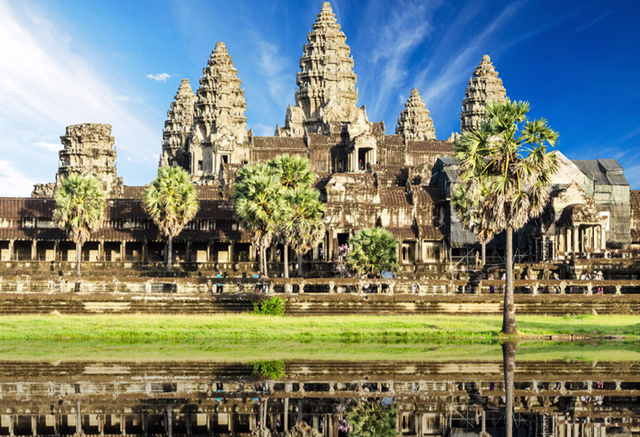7 Wonders of Asia
The 7 Wonders of the Asia represent some of the most iconic innovations or achievements of mankind from across the continent.These wonders represent the work of mankind, whereas the natural wonders of Asia are a separate collection.
As representatives of the 7 Wonders of the World, The Great Wall of China, Angkor Wat, and the Taj Majal serve as Ambassador wonders to the 7 Wonders of Asia.
Seven Wonders of Asia List:
Here is the list of the official 7 Wonders of Asia. The list is presented alphabetically and has no bearing on comparative significance:
Here is a closer look at each wonder:
Bagan
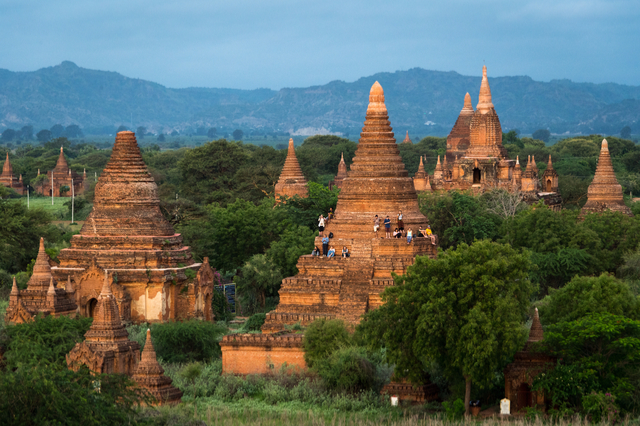
Bagan, formerly known as Pagan, was the capital of the Pagan Kingdom. Between the 11th and 13th centuries, the Kingdom built over 10,000 Buddhist temples, pagodas, and monasteries. Over 2,200 of them have survived through present day.
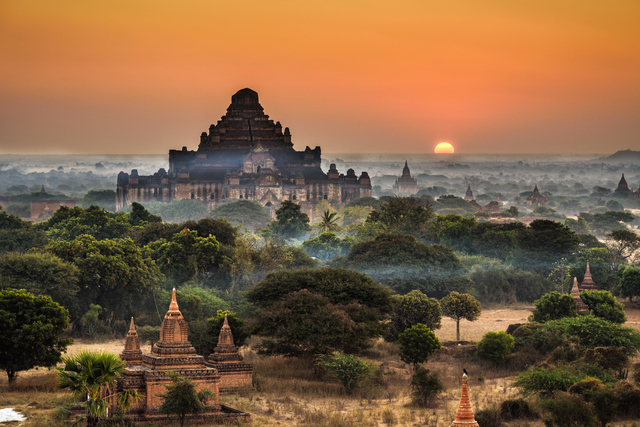
This Bagan Archaeological Zone, where these 2,200 temples and pagodas reside, is Myanmar’s driving tourist attraction. Too many, this has greater appeal and interest that Angkor Wat in nearby Cambodia.
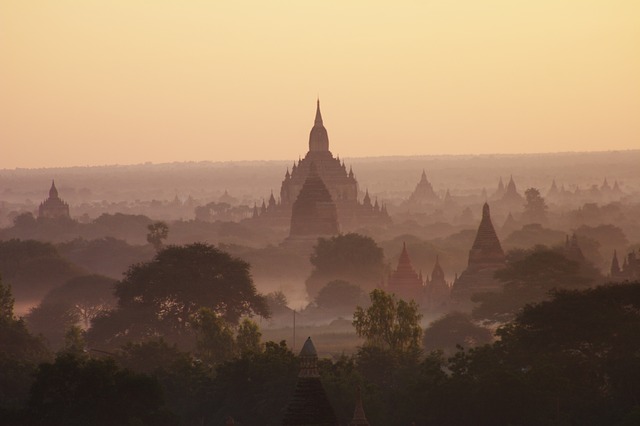
Bagan’s Pali local name, “Arimaddana-pura,” translates, “the City that Tramples on Enemies.” Over 250 years, the Pagan Empire constructed over 1,000 stupas, 10,000 small temples, and 3,000 monasteries that expand across 40 square miles (104 sq. km). The Bagan Archaeological Zone is located 180 miles (290 km) southwest of Mandalay and 430 miles (700 km) north of Yangon.
Borobudur
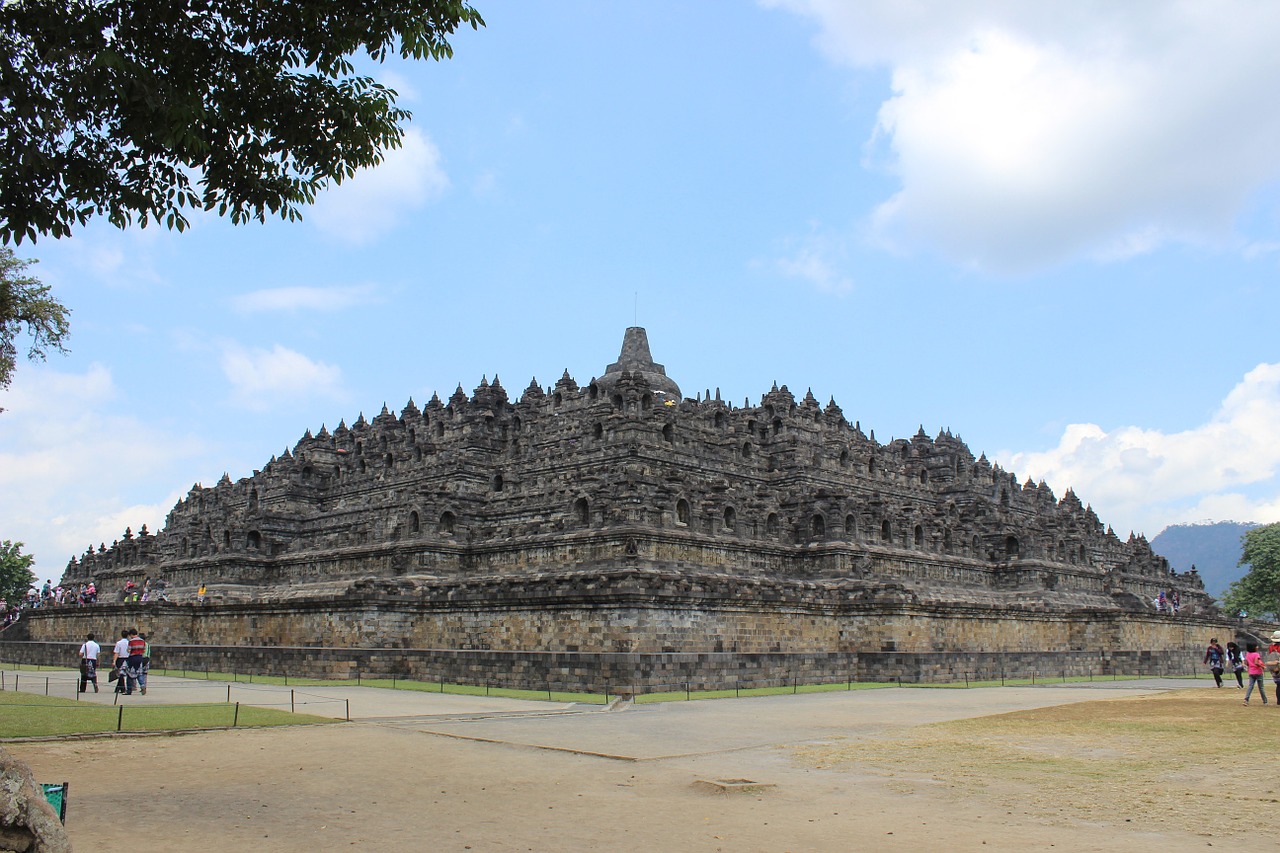
Borobudur, also spelled Barabudur, is a 9th-century Buddhist temple. The temple is located in Magelang, Central Java, Indonesia and is one of the country’s leading tourist attractions. It is comprised of 72,000 cubic yards (55,000 cu m) of andesite stones. It is the world’s largest Buddhist temple.

Borobudur is comprised of nine stacked platforms and then topped by a central dome. Furthermore, it is covered with 2,672 relief panels and decorated with 504 Buddha statues. 72 Buddha statues surround the central dome. Each of these Buddha statues is seated inside a stupa.
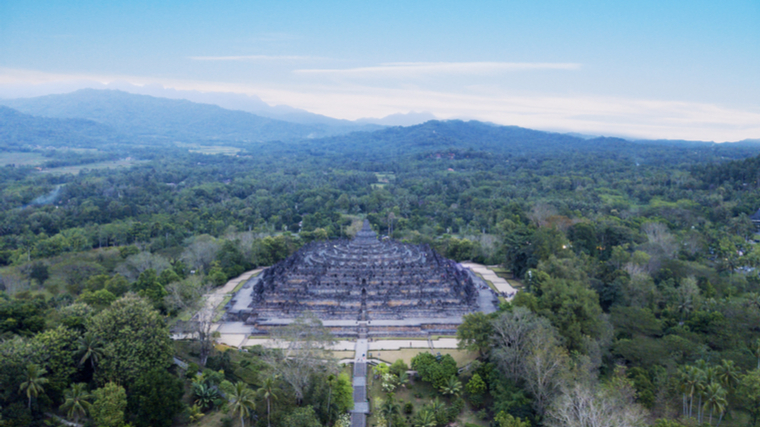
Borobudur is located 53 miles (86 km) west of Surakarta. It is the single most visited tourist attraction in Indonesia with approximately 2.5 million people experiencing it annually. The foundation stretches 387 feet (118 m) across each side creating a symmetrical square.
The monument’s three divisions serve as references to the three realms of the Buddhist cosmology. The first of these is called Kamadhatu, “the world of desires,” the second is called Rupadhatu, “the world of forms,” and the third is called Arupadhatu, “the formless world.”
Burj Khalifa
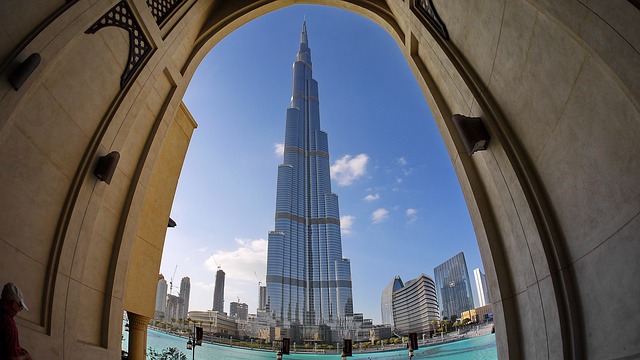
Burj Khalifa, also known as Khalifa Tower or Burj Dubai, is a skyscraper that has earned the designation as the world’s tallest building. It reaches a height of 2,722 feet (829.8 m). When the antenna is subtracted, the roof height reaches 2,717 feet (828 m).
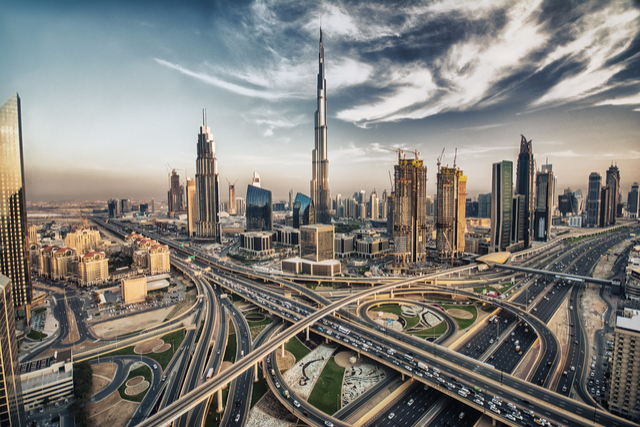
After five years of construction, Burj Khalifa was completed in 2009. The top floor occurs at 1,918 feet (584.5 m), which is level 156. An observatory sit at level 148, which is at 1,823 feet (555.7 m) high.
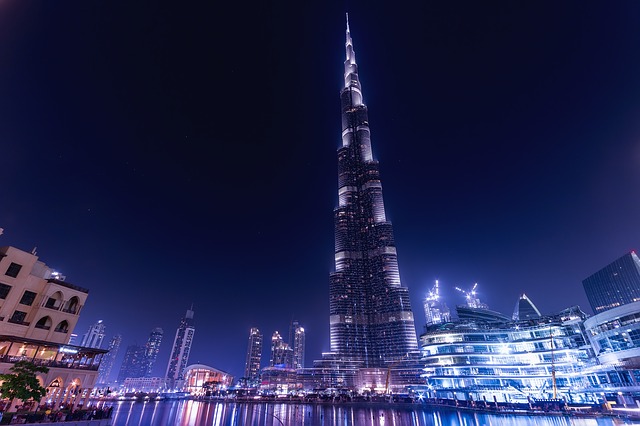
The floor area measures out at 3,331,100 square feet (309,473 sq. m). There are 57 elevators that service the building, of which two are double stacked. Burj Khalifa is located in Dubai, United Arab Emirates.
Burj Khalifa is the world’s:
• Tallest skyscraper and tallest existing structure
• Building with the most floors at 211
• Longest elevator travel distance
• Highest observation deck
• Highest nightclub and highest restaurant
Forbidden City
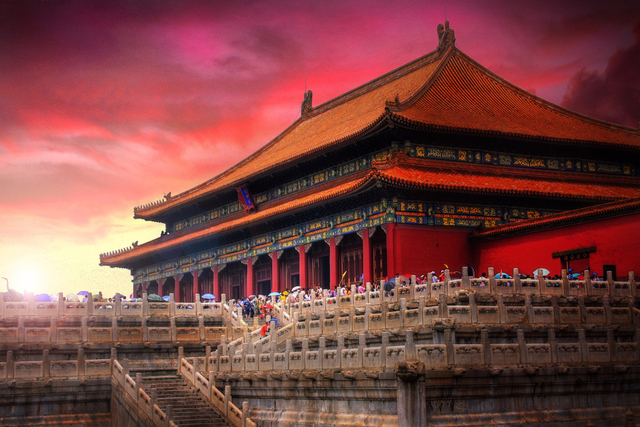
The Forbidden City is a palace complex located in Beijing, China. It served as the Chinese imperial palace from the Ming dynasty through the end of the Qing dynasty (1420 – 1912). It has the distinction of being the world’s largest collection of preserved ancient wooden structures.
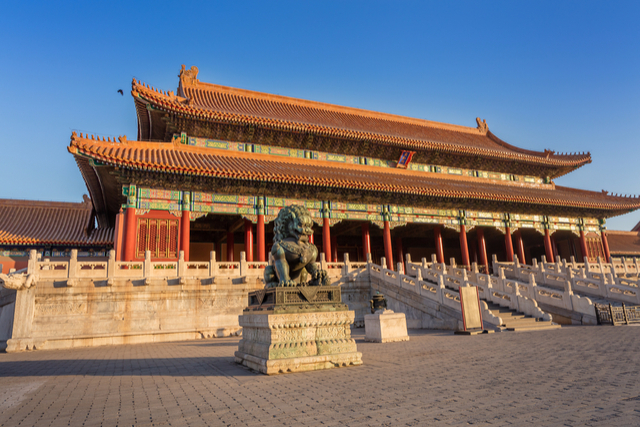
The complex is comprised of 980 buildings stretched across 180 acres (72 ha). It was declared a World Heritage Site in 1987. Although it served as the home for emperors and as the central ceremonial location for approximately 500 years, it now serves as the Palace Museum.
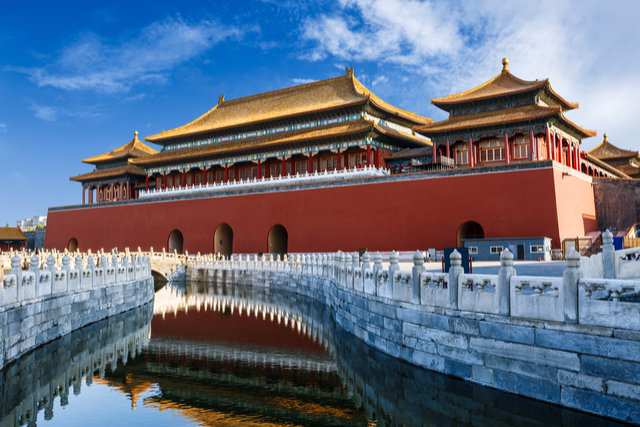
The Forbidden City welcomes approximately 15 million visitors annually. It is a rectangle measuring 3,153 feet (961 m) from south to north and 2,470 feet (753 m) from east to west. It houses 8,886 bays of rooms.
The Forbidden City was created to serve as the center of the historical walled city of Beijing. The Imperial City is a larger walled area that surrounds the Forbidden City. The Forbidden City is encompassed by a 26-foot (7.9 m) wall and a 20-foot (6 m) deep moat. The moat is 171 feet (52 m) wide.
Grand Bazaar
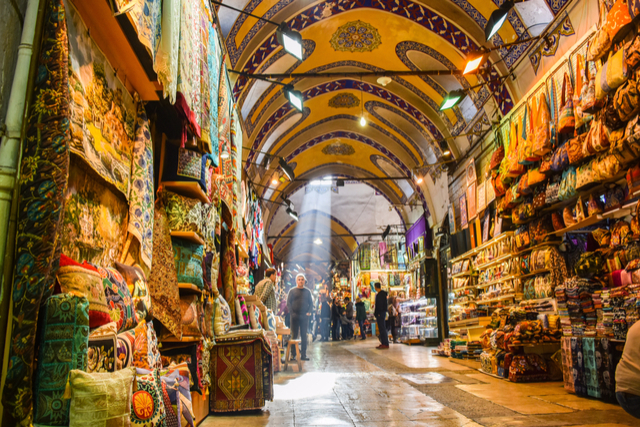
The Grand Bazaar is the oldest and largest covered market in the world. It also has the distinction as being recognized as the world’s first shopping mall. The Grand Bazaar is located in Istanbul, Turkey and is the country’s number one tourist attraction.
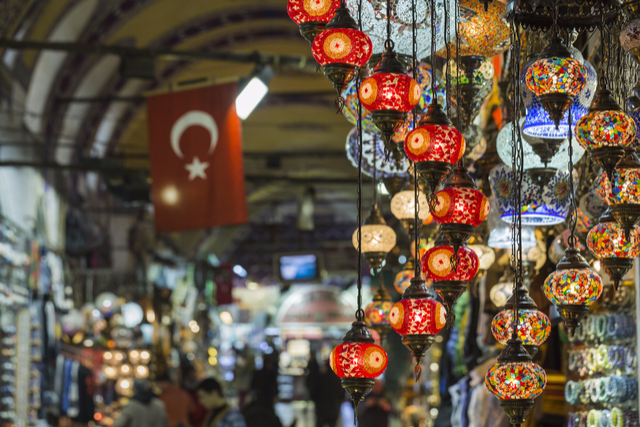
The Grand Bazaar features over 61 covered streets and over 4,000 individual shops. Not only is it the country’s number one tourist attraction, it holds the title as the world’s most visited attraction with 91,250,000 annual visitors.
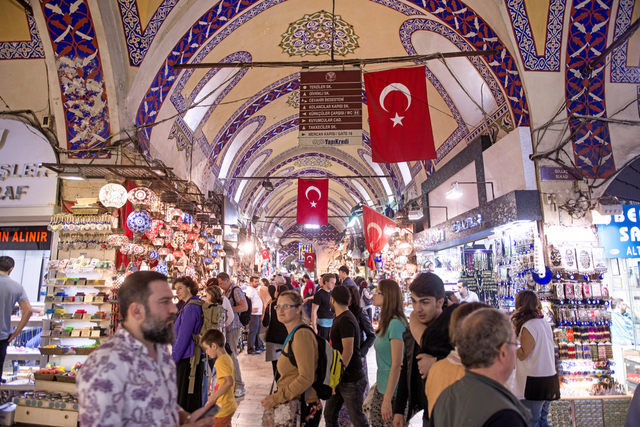
The Grand Bazaar is located inside the walled city of Istanbul. It stretches between the Beyazit mosque and the Nuruosmaniye mosque filling up almost the entire area. The initial bazaar launched in 1455. It grew over the years to reach its current completed state in 1730.
The Grand Bazaar can be accessed through four gates that include: Second-hand Book Sellers Gate, Skullcap Sellers’ Gate, Jewelers’ Gate, and Women’s Clothiers Gate. The Grand Bazaar employees over 26,000 people who serve between 250,000 to 400,000 visitors daily.
Great Mosque of Mecca
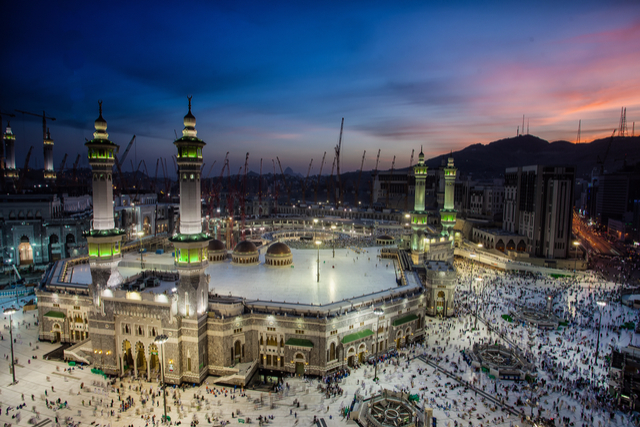
The Great Mosque of Mecca, also called the Grand Mosque of Makkah, is the largest mosque in the world. It is also home to the Kaaba, which is Islam’s holiest place. One of the Five Pillars of Islam to perform Hajj, one of the largest annual gatherings of people in the world.

The Great Mosque of Mecca is always open regardless of date or time. It has a capacity to serve 900,000 worshippers regularly, which increases to 4,000,000 worshippers during the Hajj period.
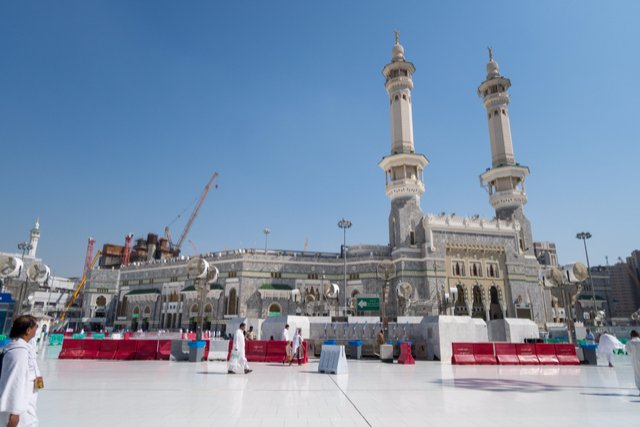
The Great Mosque of Mecca features 9 minarets that reach a height of 292 feet (89 m). The mosque extends across 3,830,000 square feet (356, 000 sq. m), which is expanding to 4,300,000 square feet (400,000 sq. m). There will also be 2 new minarets added bringing the total to 11. It was estimated that the mosque cost 100 billion dollars to construct.
Terracotta Army
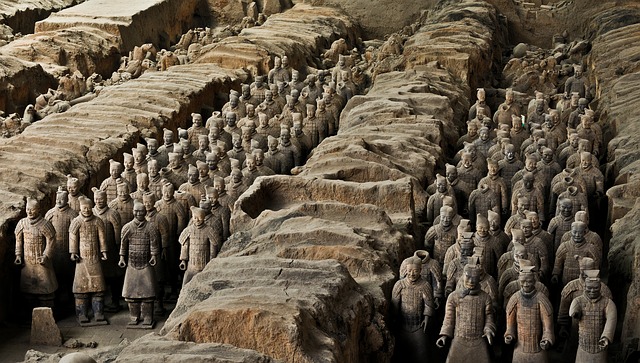
The Terracotta Army is an extensive collection of terracotta sculptures that represent the armies of Qin Shi Huang, the first Emperor of China. These sculptures serve as a type of funerary art and honor as they were buried with the emperor 210-209. The Terracotta Army, also called the Terracotta Warriors, vary in height ranging from 6 feet to 6 feet 5 inches (183 – 195 cm).
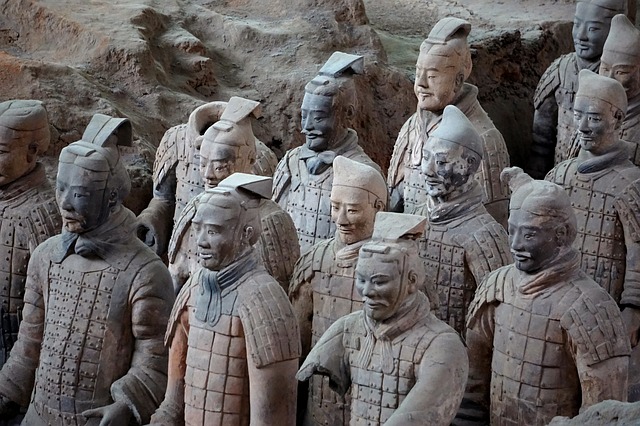
The purpose of the Terracotta Army was to protect the emperor in the afterlife. The Terracotta Army is comprised of over 8,000 soldiers, 130 chariots with 520 horses, and 150 cavalry horses. Non-military figures include musicians, acrobats, and other officials.
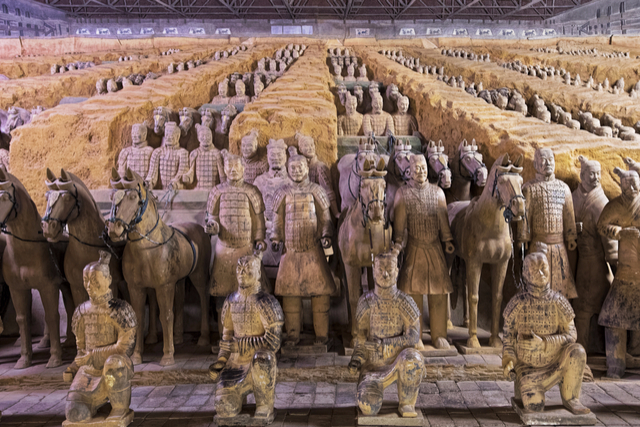
The Terracotta Army is part of a much larger necropolis that has been measured at 38 square miles (98 sq. km). This necropolis is comprised of offices, halls, stables, and an imperial park. There are four main pits that have been excavated with the main pit measuring 750 feet (230 m) long and 203 feet (62 m) wide. It holds more than 6,000 figures.
